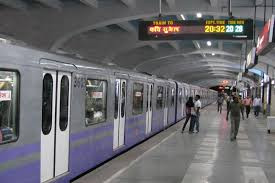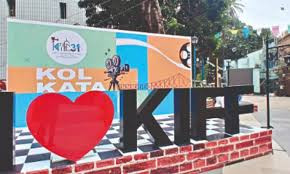Defacement Concerns Rise as Kolkata East-West Metro Stations Marred by Betel Leaf and Gutka Stains
IIE DIGITAL DESK : Kolkata, June 11, 2025 — The troubling reminder of civic apathy and disregard for public property, several stations along Kolkata’s East-West Metro corridor have come under scrutiny for being defaced with betel leaf spit, gutka stains, and paan residue, drawing public ire and concern from authorities. Despite the state-of-the-art infrastructure and modern design of the newly operational metro line, these acts of vandalism are tarnishing the image of a project touted as a milestone in Kolkata’s urban transit evolution.
The issue came to light after daily commuters and social media users began sharing images and videos of red stains smeared across the pristine white and grey tiled walls of stations such as Sealdah, Phoolbagan, and Salt Lake Stadium. Corners of staircases, elevator walls, and even parts of metro pillars were seen bearing the unmistakable marks of betel juice, commonly consumed in forms such as paan and gutka, and irresponsibly spat in public spaces.
The East-West Metro corridor, formally known as Kolkata Metro Line 2, connects the eastern IT hub of Salt Lake Sector V to the bustling railway hub at Howrah, passing under the Hooghly River — a feat of engineering celebrated across the country. The metro was designed not just to ease congestion, but to reflect the aesthetic and functional aspirations of a modern Kolkata. However, the emergence of unsightly stains has dealt a blow to its visual and hygienic appeal.
Reacting to the widespread complaints, officials of the Kolkata Metro Rail Corporation (KMRC) have acknowledged the issue and stated that efforts are underway to clean the stations and enforce stricter rules against defacement. Speaking to reporters, a KMRC spokesperson said, “We are deeply disappointed by the behaviour of some commuters who continue to misuse public spaces. We have already started placing more CCTV surveillance and will be installing signage warning against spitting, with fines up to ₹500 for offenders.”
The incident has sparked outrage among civic activists and the general public, many of whom have questioned why such behaviour persists despite repeated awareness campaigns. Civic group Amader Kolkata submitted a letter to the KMRC and Kolkata Municipal Corporation, urging joint action to implement stricter enforcement, including spot fines and community service penalties.
According to ABK (Anti-Betel-Kolkata), a voluntary organization that monitors civic cleanliness in urban infrastructure, the metro corridor's vulnerability stems from a lack of enforcement at entry points and inadequate behavioural awareness campaigns. "People need to feel proud of what has been built. If they don’t own it mentally, they won’t respect it physically," said ABK founder Tanaya Basu, whose team recently conducted a campaign near Phoolbagan metro to distribute leaflets and encourage behavioural change.
Beyond aesthetics, the problem also poses serious health and hygiene risks. Spit stains not only make the stations appear unkempt but also harbor bacteria and contribute to foul smells, especially in humid conditions. For a city that has fought hard to modernize its transport infrastructure, such acts reverse years of progress and endanger public health.
The situation has prompted the Kolkata Metro authorities to consider bringing in stricter bylaws and exploring the use of spit-resistant coatings on station walls. Education and behavioural transformation, however, remain the key to lasting change.
As commuters continue to demand cleaner, safer, and more respectful public transport spaces, the defacement of the East-West Metro stations stands as a stark reminder that infrastructure upgrades alone cannot transform a city — the change must come from its people.
You might also like!













